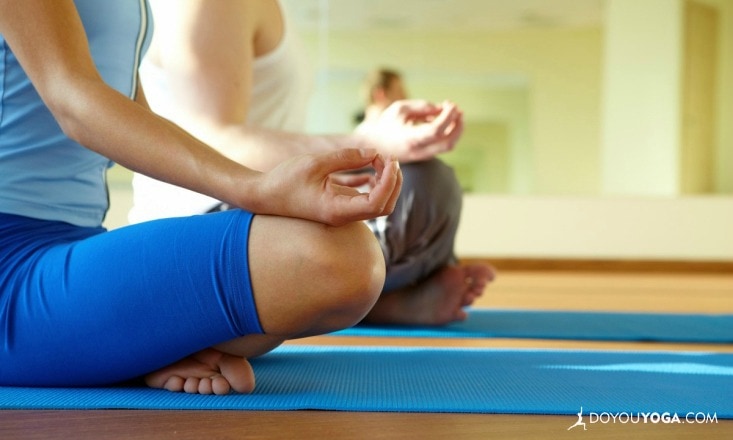How can we make our classes more accessible to every kind of student who walks in? The Hatha practitioner, the Power yogi, the person who hurt his back last night, the asthmatic, the scared beginner, and the super flexible or mega strong yoginis in the front row.
This baffles and overwhelms many teachers and can leave us feeling a little empty or inadequate after class if we feel we didn’t fulfill our duties towards each student — you know the feeling — it sits in your chest and eats at you until you fall asleep. It’s a hard yoga life!
The thing is — it’s not even about us. We feel bad for them; for the students. We are providing physical information to students and all of them should be able to access it via our classes. BUT HOW?! Here are a few things I have found useful when guiding multilevel classes.
1. Theme It
Yoga is not just about our physical practice right? So, take the emphasis off of the physical and on to something more internal. That way everyone in the room feels accomplished at the end.
Maybe the whole month is all about making your inhale last as long as your exhale, no matter how deep or shallow each posture. The Eight Limbs are a great place to start when looking for themes: perhaps the month is about intensifying your focus and concentration in each posture (Dharana), or on finding a moment of contentment somewhere challenging (Santosha).
2. Offer “Up-mods” as Well as “Down-mods”
Don’t just modify for injuries or beginners, challenge advancing students too. Offer ways for people to intensify one or two postures per class. This makes your classes accessible to those who want to grow their practice beyond where they currently are.
For example, in Vinyasas offer a one legged option, in Crow Pose tell people they could keep their feet on the floor — or try to lift one leg into a one-legged flight version. Once you guide it a few times people will start using it even if you don’t call it.
Thus the yogi feeds itself!
3. Start Slow and Build
Begin every class with modified versions of all your more intense postures or flows (knees down, use forearms, etc). It’s a great way to warm up and it teaches people how to modify without allowing them to struggle or be singled out. Plus it opens the body up to enter the more intense variations with greater ease later on.
With this method everyone knows how to modify in any class they take in the future. You are teaching them how to honor their body after all!
4. Fall Down
Let your students know that in your classroom they should feel welcomed in to falling, laughing, tearing up, and resting. If you yourself fall down, laugh with them.
Often I’m so busy looking at my students shoulders and low back area in Tree Pose that I teeter over to one side and catch the eye of a beginner at the back who has fallen out herself, only to be reassured that balancing isn’t as easy as the front row makes it look.
Everyone wants to know that they are not the only ones struggling. My students love this aspect of my classes. They tell me they are more likely to try new stuff in my class because they know its ok to fall on their face and break the flow.
It’s a mood lifter and it opens the door for beginners to see other students — and teachers — be ok with falling out of postures.
5. Nobody Minds
Make the yoga group a place of non-judgment. At the beginning of class, announce that this class is for everyone — no matter how strong, flexible, agile, or tired. Tell them how every day on your mat is different, and explain how the day you’ve had can be reflected in your physical practice.
Let them know about non-judgment to self (Ahmisa) and that practicing awareness around the obstacles, injuries, emotions, tightness, or hyper flexibilities leads to better health and a safer practice in the end.
So there it is. My advice to anyone feeling a little topsy-turvy after teaching a class where no one came up in Wheel Pose, or everyone had a different injury. Or three people got up and left, or you had four advanced students and four beginners, or… well the list is endless.
Remember it’s not about you, it’s about them. Being a teacher is about passing on information in a way that everyone can understand and utilize it. You won't nail it every time, but hopefully these yoga teaching tips inspire you to get a little closer!


